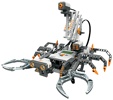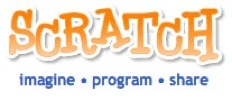I attended a conference yesterday where I presented along with colleagues on how our school is using Moodle and the impact it has had for changing the educational environment of our school. I started by showing a log of recent activity which is followed by my speech about “Walled Garden and Safe Digital Network” that Wesley and Miguel have made me aware of in past posts on their blogs.
I use this log as a teaching tool since it contains IP addresses and other important user data just like every other web site they visit. It helps get the awareness raised to the need to keep private information private and how web sites gathered all sorts of data from visitors. There have been stories on how some technology companies allow this data to be “screen scraped“. Awareness is the first point of the process of changing a behavior.
As we went through the presentation I could see the eyes of the attendees (along with their heads shaking) that they were seeing the power of it. Last Friday I taught the 5th graders about Cyber Security regarding passwords and user information and how there is a big difference between private and personal information. Private is meant to be kept off line while personal information like what cookies I like and how many dogs I have will give a viewer some information but will not let them triangulate where I live or will be at 3:30 today.
I constantly see the value of Moodle and do not know what I would do without it. In fact tomorrow all 8th grade students are taking a Computer Competency Exam through Moodle. While I will have them in the lab through their Science, Language Arts or History courses, they can do a review course now via Moodle. The exam covers Word, PowerPoint, Excel and Information and Digital Literacy. I wish I did not have to administer it as I think the skills that need evaluation are not measured by an exam. I do very little if any instruction on Word, PowerPoint or Excel but do a lot on using Discussion Forums, Journals, Podcasting, Images and other creation type tools. I know it is important to know how to use a word processor, presentation software, and even spreadsheets, but Microsoft is not the only game in town. I have students who use only Google docs as they do not own copies of Office. Until I figure out a better solution, I will evaluate students to make sure they at least know the skills tested. If a student does fail the exam, the only result is that they need to take a computer course in the Upper School before the end of their sophomore year. If they pass it, then they are exempt from taking any computer course in the Upper School. This actually is a bigger concern for me as in the age of information overload, knowing more is better then knowing being done. I think this is an example of a straddle effect.
Update 2/26/08: I had a meeting with the Middle School Technology Committee where we discussed items of interest and out of it came the need for instruction for students in how to send email, write email, and other uses of current technologies as feedback from professionals students contact is that they do not know how to write an email or letter. Maybe if we give students email accounts we could model and teach this curriculum. I remember learning how to write these documents in the dark ages of no computers.
New tools abound and one I am learning today so I can be in 2 places at once is called ScreenFlow. I am working at purchasing it since the demo mode is splashed all over the finished video unless I purchase it. This may seem easy enough, but the company is in England and they will not take American Express unless I use British Pounds instead of US Dollars for American Express due to the exchange rate. Get the idea! A global economy affects my learning and teaching here in Durham. Flat World indeed:)
Parents and students are great sources of links as well. Here are some I have been looking at lately:
http://www.2mminutes.com/ This is a movie about the life cycle of a learner in high school. There are about 2, 000, 000 minutes in a high school student’s career. How best to use it? This video will definitely provoke discussions and disagreement. I think like most things in the world, it all depends on the lens you view it with as to how you react. The video came about after Bob Compton visited India.
Futures Channel Jessica P. was finishing up her Independent Science project and wanted to embed the video on the Wind Farm. She had done her PowerPoint and has a link to the site, but wanted to see if she could just show the section of the film she wanted to show during her presentation. Since the video is a Shockwave file and because it appears that they hold all rights to the work, there was no way to do this mashing up or repurposing of the video. I was intrigued by the site and the tag line: “Connecting Learning to the Real World”. I think her use of it to support her presentation is great and I would have loved to of talked with her more about how she found it “I was looking around for resources”. This is where we need to be teaching and not how to insert a table into a Word document.
This post feels scattered and I guess it is as I have been teaching podcasting to 6th graders, helping a student get their Google Presentation Offline (No luck yet) and other duties that come up as I straddle each day with one foot in the future and one foot in today.




